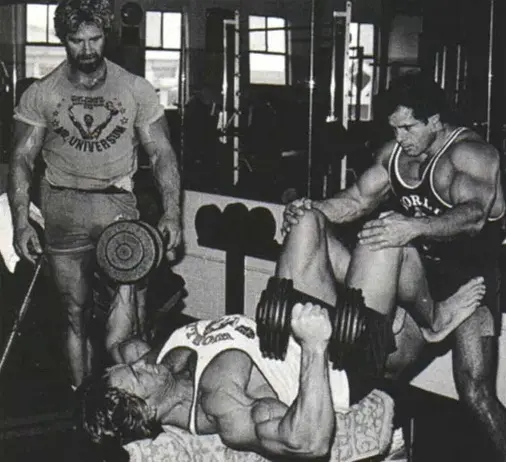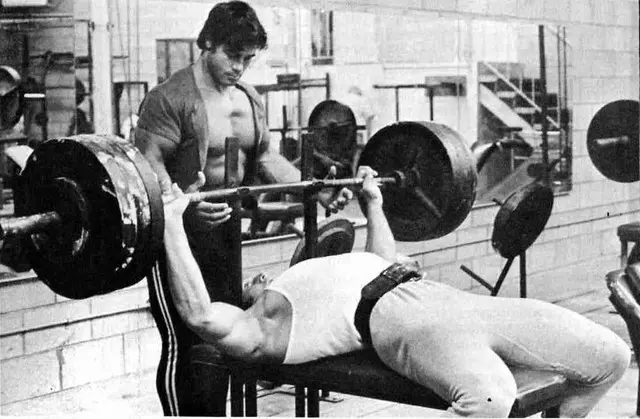When it comes to burning fat, most exercisers adopt the usual formula of cardio and calorie restriction. Increasing your calorie expenditure and reducing your calorie intake forces your body to burn fat for fuel. This is called creating a calorie deficit.
While this approach works, it might not be the best option for anyone who wants to maintain or build muscle, stay strong, or just hates traditional cardio.
The good news is that there is an alternative, and you can achieve your body composition goals using strength training. This approach offers several advantages over cardio:
- Less muscle loss
- Increased post-exercise insulin sensitivity
- Increased resting metabolic rate
- Shorter workouts
- No need to add extra sessions to your existing training program
You’ll still need to clean up your diet, but you won’t need to spend hour after boring hour on a treadmill or going nowhere on an exercise bike.
Be warned; using strength training to burn fat is not easy – especially if you aren’t very fit. But it’s this hard work that makes these training methods so very useful.
Here are six ways to burn fat with strength training.
Level Up Your Fitness: Join our 💪 strong community in Fitness Volt Newsletter. Get daily inspiration, expert-backed workouts, nutrition tips, the latest in strength sports, and the support you need to reach your goals. Subscribe for free!
1. Active Rest Periods
If you analyze most strength training workouts, you’ll see that most exercisers spend more time resting than they do training. For every 40 to 60-second set, you probably spend a minute or two resting. If you are lifting heavy weights, you might even rest as long as three to five minutes between sets.
Needless to say, all this inactivity does not do much for your calorie expenditure.
Move more and rest less by making your rest periods more active. Instead of sitting on a bench and waiting for the clock to run down, do a short bout of easy to moderate-paced cardio. Not only will you burn more calories per workout, but you’ll also increase blood flow around your body, enhancing recovery.
One of the best options for this is jumping rope. Why? Because you can carry the rope wherever you go in the gym, so you won’t have to waste time walking back and forth to a treadmill, bike, or stepper.
Also, while jumping rope is an excellent cardio exercise, it doesn’t overload any single part of your body. That means you can jump rope between almost any set of strength training – upper AND lower body.
If you usually do 30 sets per workout and rest 90 seconds between sets, jumping rope will add 45 minutes of additional exercise to your current workout without making it any longer. You don’t even need to jump for the entire duration of your rest period – just do 30-45 seconds, leaving yourself half a minute or so to get ready for your next set.
2. Supersets
Supersets involve doing two exercises back-to-back. You then rest after completing the second exercise. Doing supersets is an effective way to increase workout density, which is the amount of exercise you can cram into your training session. The more sets you complete, the higher your calorie expenditure will be.
There are lots of different types of supersets, but some are better than others for fat burning. The best fat burning supersets are:
- Push/pull supersets, e.g., bench press and pull-ups
- Lower body/upper body, e.g., squats and push-ups
- Major/minor supersets, e.g., pulldowns and calf raises
Because the second exercise provides an active rest after the first, you won’t need long to recover between movement pairs. 30 to 60 seconds should be plenty of time to catch your breath and return to the first exercise in your superset.
3. Tri-Sets
Was doing two exercises back-to-back too easy? Then try three! Tri-sets are like mini-circuits and, if you choose the right exercises, you’ll find they are very effective fat burners. For best results, use legs-push-pull tri-sets. These are challenging and very time-efficient. For example:
Rest 60-90 seconds between tri-sets and repeat. Supercharge this training method by jumping rope instead of resting passively between sets.
4. Circuit Training
Circuit training is the original do-it-all workout. Invented way back in the 1960s, this training method was created to develop fitness, build strength, and burn fat all at the same time. Unlike a lot of newer training methods, circuit training has stood the test of time and has been proven to work really well.
So, what is circuit training?
Most strength training workouts are performed horizontally. That is to say, you do several sets of each exercise before moving down your list to the next one.
Level Up Your Fitness: Join our 💪 strong community in Fitness Volt Newsletter. Get daily inspiration, expert-backed workouts, nutrition tips, the latest in strength sports, and the support you need to reach your goals. Subscribe for free!

With circuit training, you do your exercises vertically, which means you do just one set of each one before moving on to the next, usually taking no rest between each one.
Moving quickly from one exercise to the next increases your heart and breathing rate, increasing your energy expenditure in the process and despite not doing any recognizable cardio.
Creating a circuit is easy – just choose 6-12 exercises, mostly compound as they have the biggest impact on cardiorespiratory function, and arrange them in something like a push-pull-legs-abs order. By avoiding putting similar exercises next to each other, you should be able to give each one your best effort, further increasing the effectiveness of this workout.
For example:
- Dumbbell bench press x 12*
- Chest supported dumbbell rows x 12*
- Goblet squats x 12*
- Planks x 45 seconds*
- Barbell shoulder press x 12*
- Bent over barbell rows x 12*
- Zercher squats x 12*
- Crunches x 20*
- Parallel bar dips x 12*
- Pull-ups x 12*
- Leg press x 12*
- Hanging knees to chest x 12*
If circuit training has a downside, it is that you’ll need to monopolize a lot of different training equipment at the same time. That means this workout is not suitable for busy gyms. But, if you have the gym to yourself, circuit training is a very efficient strength training, fat-burning workout.
5. Complexes
Complexes are like circuits, but you use the same training tool (barbell, dumbbells, kettlebell, or medicine ball) for all the exercises you have chosen. Complexes tend to be shorter than circuits too, which means they are a form of high-intensity interval training as well as a type of strength training. If your gym is too busy for circuit training, complexes are the perfect alternative.
Using the same training tool for all the exercises also means you can move quickly from one exercise to the next. Ideally, the exercises should flow together, to make your transitions even faster. Moving quickly from one exercise to the next will ensure your heart rate stays high.
Here’s an example of a barbell complex. Use the same bar and weight for all the exercises:
- Deadlift x 5
- Bent over row x 5
- Power clean from hang x 5
- Front squat x 5
- Push-press x 5
- Back squat x 5
If you find some exercises harder or easier than others, simply adjust the rep count. For example, in the workout above, you might do 10 deadlifts and 10 back squats, but five reps for everything else. The aim is to ensure each exercise feels similarly difficult without adjusting the weight.
Need more inspiration? Here’s a complex using just one kettlebell:
- Kettlebell cleans – left hand x 5
- Kettlebell cleans – right hand x 5
- Kettlebell swings – two hands x 10
- Kettlebell goblet squats x 10
- Kettlebell halos x 10 (five in each direction)
- Kettlebell thrusters x 10
You can adjust your rep range to match your strength training goals, i.e., go heavy to build strength, or go a little lighter and do more reps to build muscle. Either way, complexes provide a great way to burn fat with strength training.
Create your own complexes or try one of the many examples you can find on YouTube, such as this one:
6. EMOM Sets
EMOM stands for Every Minute, On the Minute. When you do EMOM training, you start each set at the top of each minute, resting for as long as is left before starting your next one.
So, for example, if it takes you 25 seconds to do eight pull-ups, you get 35 seconds rest before you start again. Simple!
EMOM sets force you to work at a fast pace to ensure you get as much rest as possible before you go again. But, even then, your rests are short, so your heart and breathing rate will increase.
When designing an EMOM workout, you should choose a weight and rep range that means you complete your set in 20-30 seconds, leaving a similar amount of time for recovery. Do 3-5 sets of your chosen exercise before moving on to the next one.
Here is an EMOM training workout for your chest, back, and shoulders.
- Bench press – 4 sets of 6 reps
- Pull-ups – 4 sets of 6 reps
- Push-ups – 4 sets of 10 reps
- Inverted rows – 4 sets of 10 reps
- Barbell shoulder press – 4 sets of 8 reps
- Pulldowns – 4 sets of 8 reps
- Lateral raises – 3 sets of 8 reps
EMOM a bit too challenging for you right now? Try going every 75 or 90 seconds instead. Then, as you get fitter, shave 5-10 seconds off until you graduate to real EMOM sets.
Burning fat with strength training wrap up
If you want to get ripped with strength training, these workout methods can help. Each one will challenge your muscles and your cardiovascular system, resulting in a very high-calorie expenditure per workout.
Not only will you burn more calories per hour, but you’ll also increase your post-exercise metabolic rate and your insulin sensitivity, both of which will contribute to fat loss.
Cardio CAN work for fat loss, but it’s often time-consuming and could even result in muscle loss, especially when combined with a low-calorie diet. And some people just find cardio boring. These methods will preserve your hard-won muscle mass and may also trigger hypertrophy. They’re also fun and challenging too.
Get ripped faster by using strength training for fat loss.











